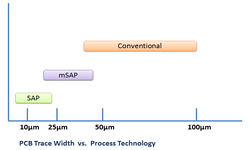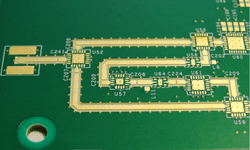A Guide to Selecting the Right SMT Soldering Technique for Your PCB Assembly
Selecting the right surface mount technology (SMT) soldering technique is crucial for PCB assembly to ensure the reliability and functionality of the final product.
There are several SMT soldering techniques available, each with its own advantages and disadvantages. Below are some SMT soldering techniques and tips on which of these methods are appropriate for a specific PCB assembly project.
Reflow Soldering
Reflow soldering is the most widely used SMT soldering technique in PCB assembly. It involves applying solder paste to the pads on the PCB, placing components onto the paste, and then heating the assembly to a specific temperature to melt the solder and create a permanent electrical connection.
This technique offers a multitude of benefits, including selling multiple components simultaneously, consistent and repeatable solder joints, and being a low-cost option. Reflow soldering is also suitable for various component sizes and shapes.
To select the right reflow soldering technique for your PCB assembly project, consider the size and complexity of the PCB, the number and type of components, and the desired production volume. There are several reflow soldering techniques available, including infrared (IR) reflow, vapor phase reflow, and convection reflow, each with its own advantages and disadvantages.
Wave Soldering
Wave soldering is another common SMT soldering technique in PCB assembly. Wave soldering involves applying flux to the PCB and then passing it over a wave of molten solder to create permanent electrical connections.
This technique has several benefits. They include soldering through-hole components, high throughput, and serving as low-cost choice compared to other optiions. Wave soldering is also suitable for PCBs with a high component density.
Several wave soldering techniques are available, including selective wave soldering, which allows for selective soldering of specific details. On the other hand, double-sided wave soldering provides soldering on both sides of the PCB.
Hand Soldering
Hand soldering is a manual SMT soldering technique that uses a soldering iron and solder wire to create electrical connections between components and the PCB. Hand soldering is suitable for small production volumes or rework and repair of PCBs.
Hand soldering offers several benefits, including the ability to perform precise and detailed soldering, low cost, and flexibility. Hand soldering is also suitable for PCBs with a downward component density.
Hand soldering requires skilled labor and can be time-consuming, so it may not be suitable for high-volume production.
Selective Soldering
Selective soldering is a robotic SMT soldering technique that uses a robotic arm to apply solder to specific components on the PCB. Selective soldering is suitable for PCBs with a high component density or for the rework and repair of PCBs.
Several advantages comes with selective soldering. Some of these include the ability to perform precise and detailed soldering, low cost, and flexibility. Selective soldering is also suitable for PCBs with a high component density.
In selecting the right selective soldering technique for your PCB assembly project, remember that selective soldering requires skilled labor and can be time-consuming. Thus, it may not be suitable for high-volume production.
In conclusion, choosing the right SMT soldering technique for printed circuit board (PCB) assembly and selecting the right surface mount technology (SMT) soldering technique is crucial to ensure the reliability and functionality of the final product. Several SMT soldering techniques are available and they have their own edges and downsides.
It is also crucial to select a reliable and experienced PCB assembly service professional that can offer the SMT soldering techniques you need for your project. ELE PCB is a leading PCB assembly service provider that offers a wide range of SMT soldering techniques. They use advanced equipment and highly skilled technicians to ensure that your PCB assembly project is completed to the highest quality standards.
ELE PCB also offers a range of high-quality materials, including FR-4, polyimide, ceramic, and metal-core PCBs, to meet the specific demands of various applications. They also offer custom PCB manufacturing and assembly services to help customers achieve their desired outcomes.
In addition to selecting the right SMT soldering technique and choosing a reliable PCB assembly service provider, there are several best practices that can help ensure the success of your PCB assembly project. These include:
- Proper handling and storage of components and PCBs to prevent damage or contamination.
- Proper cleaning and preparation of the PCB surface to ensure good adhesion of the solder.
- Proper application of solder paste to the PCB to ensure even distribution and appropriate volume.
- Proper temperature profiles during soldering to ensure proper wetting and adhesion of the solder.
- Proper inspection and testing of the final product to ensure that it meets the desired quality standards.
In summary, selecting the right SMT soldering technique is crucial to the success of your PCB assembly project. Consider the size and complexity of the PCB, the number and type of components, and the desired production volume when selecting the right technique for your project.
Choosing a reliable and experienced PCB assembly service provider is also important to preserve the quality and reliability of the final product. By following best practices, you can help ensure the success of your PCB assembly project and achieve the desired outcomes.
Related Post
- 5G Reference Network Architecture
- 5G Network Sharing: Concept, Benefits and Architectures
- Hybrid Core Network – 4G Core to 5 G Core Interconnection
- Deployments Scenarios for 5G-NR
- Lawful Intercept (LI) in 5G System


